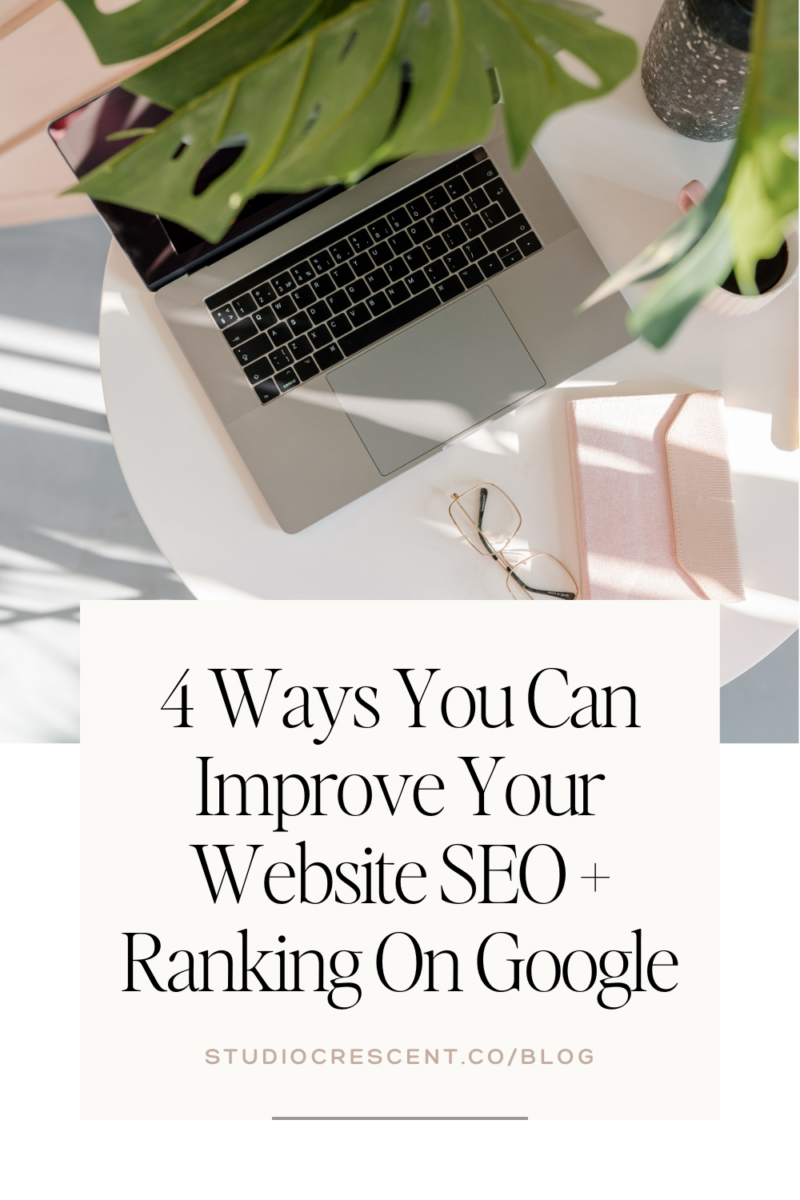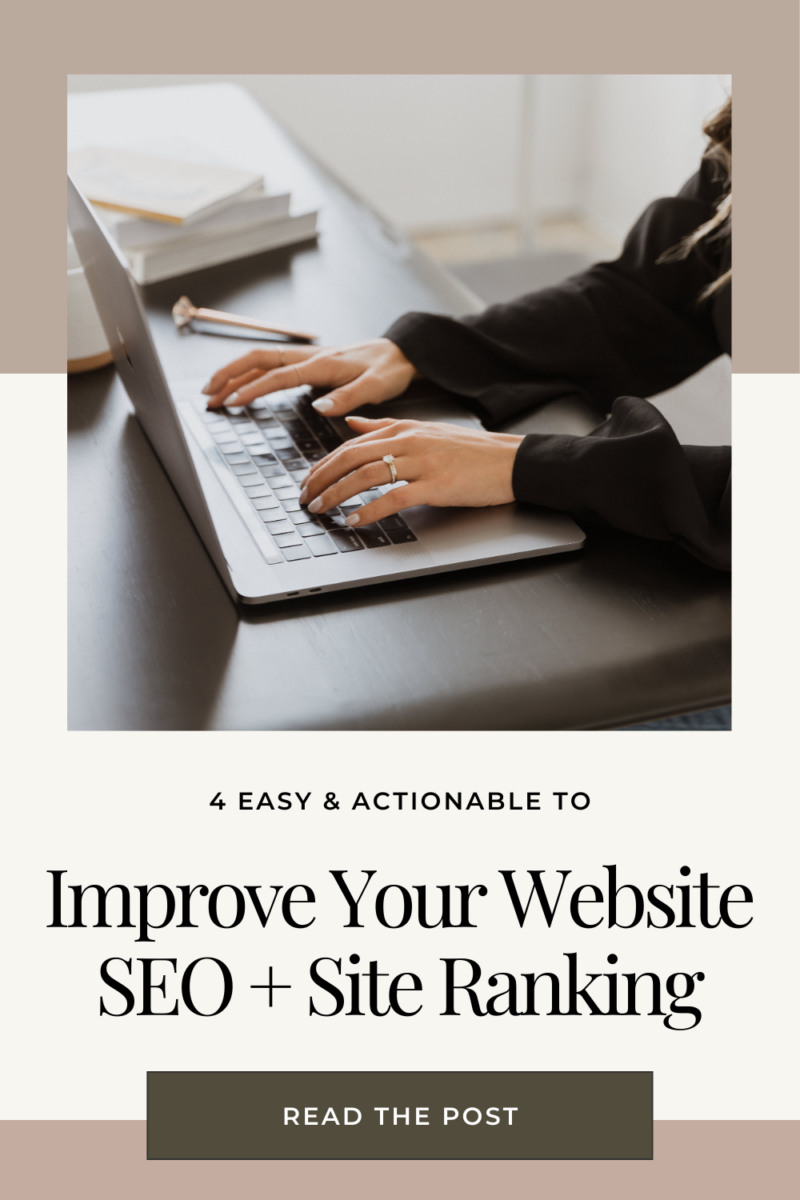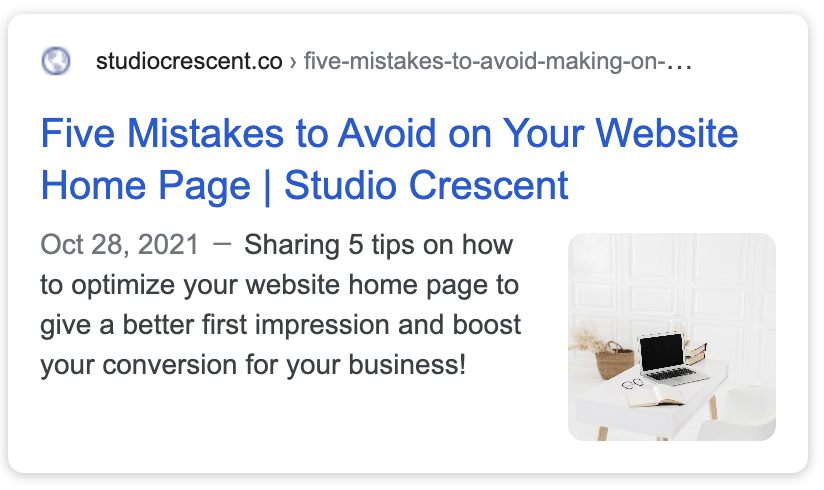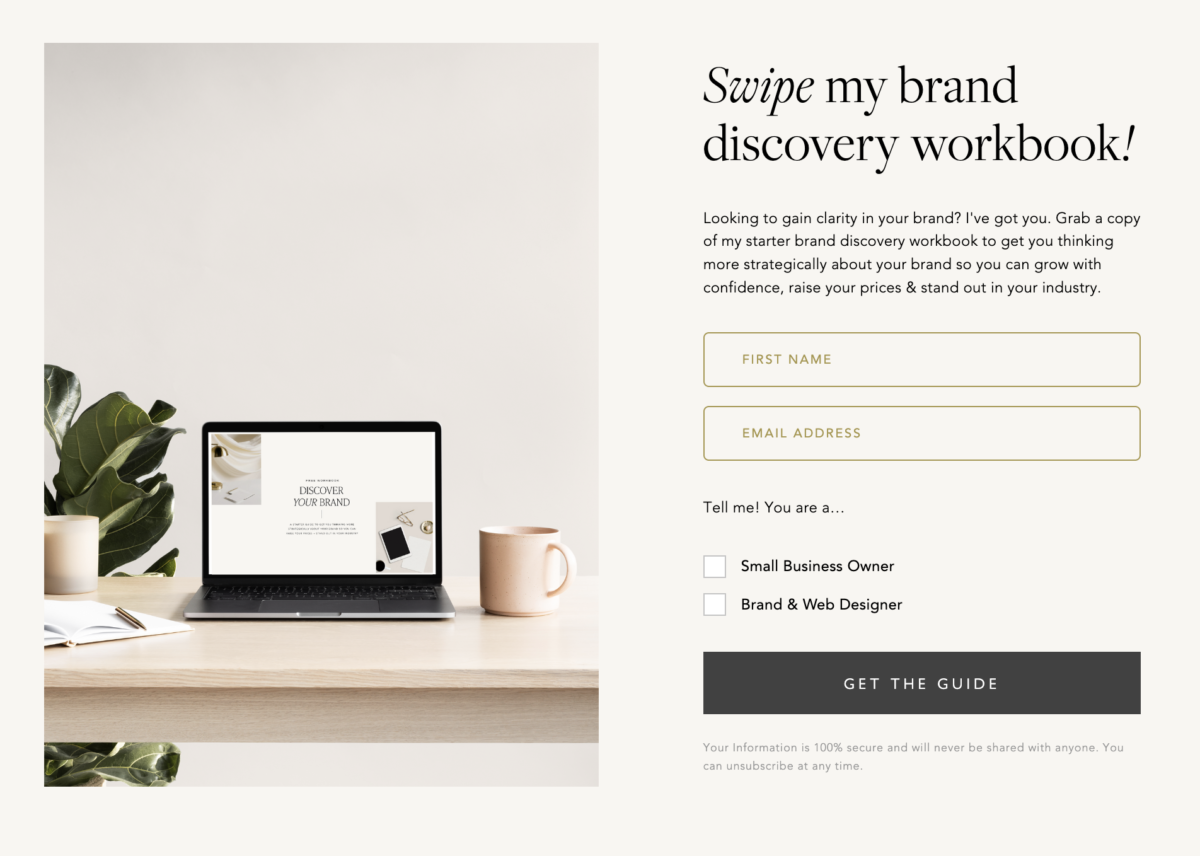4 Easy Tips to Improve Your SEO + Site Ranking
In today’s blog post, I am going to offer four essential tips that you can take action on today to improve your SEO for your website!
Before I begin, let me preface this post by saying that I am by no means a Seach Engine Optimization (SEO) expert. As a web designer, I do take into consideration basic practices and incorporate them into my design to improve your SEO. If you are wanting to optimize your site even further, I do recommend working with an SEO-driven copywriter, such as Lauren from Salted Pages, or an SEO Specialist, such as Ryan Moreno.
Alright, now that we got that disclaimer out of the way, let’s get to the good stuff!
Just in case you were ever wondering, there are approximately 1.14 billion websites in the world. Knowing that you probably are feeling just as overwhelmed as I am to ensure your website is as optimized as it could be. Although SEO tips can change year over year, it is best to be able to get the foundational best practices down pat so that you have somewhere to start.


Here Are Four Ways to Improve Your SEO on Your Showit Website
Research Relevant Keywords
SEO keywords are the relevant keywords and phrases in your web content that people could potentially use to find you on Google and other search engines, which is why knowing and using the right ones are so crucial to your SEO strategy. The more keywords and phrases you are using in your website copy and blog posts, the higher your website could rank.
👉🏼 More visibility, more leads, more sales!
The most common types of keywords are:
- Short-tail keywords are usually shorter and more generalized, consisting of 1-3 words. For example: hair stylist.
- Long-tail keywords, however, are longer and a bit more specific, consisting of 3-6 words. For example: balayage hair stylist in Toronto.
As you are doing your keyword research, two key factors to look out for are SEO difficulty and Search Volume.
SEO difficulty refers to how “difficult” it would be for you to rank using that keyword. The goal is to use keywords that have little competition and are easier to rank on. For example, if your keyword is “Email Marketing for Small Businesses“, chances are there are larger brands and companies that are already using this key phrase and it would be hard for you to get in front of them. However, “Email Marketing For Freelancers” might have a lower ranking and therefore, could be advantageous to you.
Search Volume, however, refers to the frequency of a certain keyword being searched monthly. In this case, you would most likely want to use a keyword that is more popular and rank higher; however, it’d be important to note what the organic traffic is by a unique user. Another great way to monitor real-time data on the keywords potential clients are searching for is by creating a free Google Search Console account and connecting your website to it.
To know what keywords to use strategically, here are some of my recommended paid/free tools you can take advantage of:
Feeling up for the challenge? You could go one step further and analyze what are some keywords your competitors are using and ranking on.
Optimize Page Titles and Meta Descriptions
If you incorporate keyword research as part of your writing ritual, optimizing your page title and meta descriptions should not be too hard.

Your page title should be no longer than 50-60 characters long. It should tell the reader what the page or post is about and why they should click on it. It should entice and engage at the same time.
Your meta description, however, should be between 100 and 160 characters and should support your page title, informing the reader as to what they can expect. It would also be beneficial to use a couple of keywords in the description to boost your ranking.
🌟 Pro-tip: For those who blog using Showit/WordPress, you should definitely activate the free Yoast SEO Plugin as it tells you exactly what you can do to improve your SEO for each post/page on your website.
Include Internal and External Links
Let’s break this down: what exactly are internal and external links when it comes to your website? More specifically your blog?
- An internal link is a link that directs the reader to another page of your website
- An external link is a link that directs the reader to an external website
Personally, I’d put more priority over internal links as you have more control over the content. Not to mention, the longer people are on your website, the more it tells search engines like Google that your website has content that is valuable and engaging.
However, having external and outbound links can equally be as important, especially for blog posts, because they can create relationships between different content pieces. As long as they are linked properly (ie. trustworthy, highly-ranked websites) and relevant to your post, these external links can, in fact, help build authority and credibility for your business.
Related Post: Ways To Add Movement To Your Website To Boost Conversion
Compress The Size of Your Photos
As human beings, we are getting more impatient. With our attention span being almost next to nothing these days, every second counts.
To put it in simpler terms, the faster your site loads, the more your readers will engage with it, which means the more Google will like it. Ideally, you’ll want your website to load within three seconds.
One of the contributing factors to a slow website is usually the size of your images. The larger the image, the longer it takes to load. Before uploading the images onto your website, I encourage you to run them through an image compressor first so that it is optimized for your website.
Rule of Thumb?
- Size: Between 500 KB – 1MB
- Dimensions: At least 3500 px
- File Type: JPEG (PNG/SVG only if it’s a logo)
The key here is to ensure the quality of the images isn’t lost just because they are being compressed. Here are my two favorite tools to make it happen:
Once your images are compressed, the last step you would want to include in your process is to rename the image. Google won’t be able to decipher what “IMG_34242” is but it can understand “olive-green-bedroom-walls”, which can improve your overall SEO.
To wrap it up…
If you are interested in learning more about SEO for your website, here are some fantastic resources to look into:
And of course, this goes without saying, make sure to sign up for a Google Analytics account for your website so that you are able to gather more real-time data in order to make better-informed decisions about your business.
👉🏼 Interested in working with a designer to elevate your website and boost your online presence? Get in touch by booking a complimentary discovery call today!
Paragraph
Calling all nutritionist coaches!
Meet The Full Sales Page Copy & Design Template Duo
Everything you need to finally launch your nutrition program with clarity, confidence, and personality. With copy fill-in-the-blanks, a drag-and-drop Showit template, and video walkthroughs, this is your done-with-overwhelm, ready-to-sell sales page template.
Shop Showit Website Templates
No Coding • Drag & drop • SEO optimized
Someday
Editorial, Edgy, Minimal
View demo
Joelle
Artistic, Striking, Refined
View demo
Beauté
Clean, Minimal, Refreshing
View demo
Designed By Yours Truly 🤍
